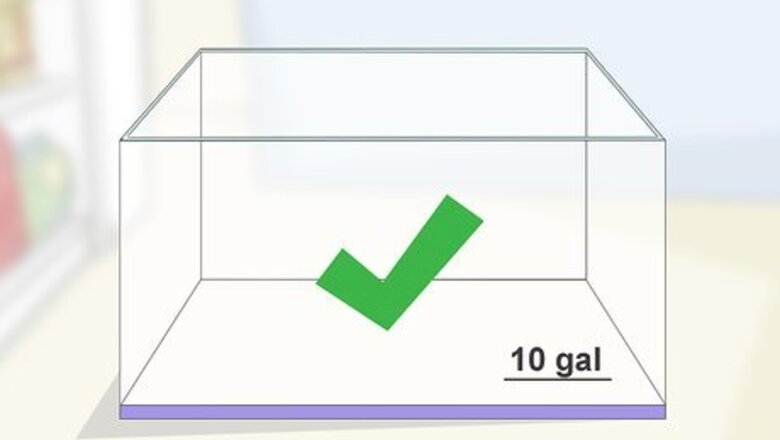
views
Creating the Right Environment
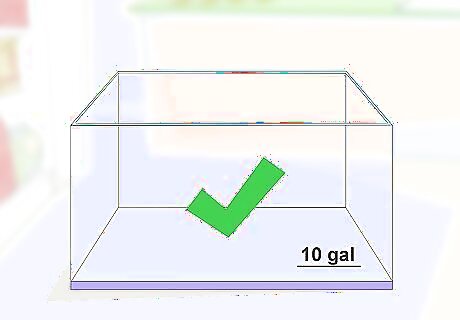
Buy an aquarium. Aquatic newts need a proper aquarium set-up to live happily. A 10-gallon (38 L) tank is a good choice, but a larger tank is generally better. Don't place your newt in anything smaller. Newts do well when there are at least two in a tank. Consider getting two newts, which can live happily in a 10-gallon (38 L) tank.
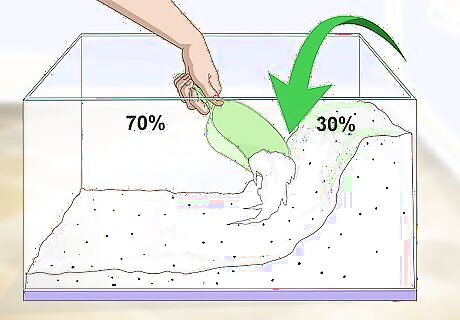
Create the right ratio of water to land. Though the newt is named an aquatic newt, they need both land and water in their aquarium. Consider making your aquarium 70% water and 30% land. The tank needs enough land area for your aquatic newt to come completely out of the water and onto the land. Slope aquarium gravel up towards one edge to create an island or place a large rock inside with a slope for your newt to climb up. Make sure the slope is not too slippery since newts sometimes have trouble climbing. The slope should be gradual instead of steep. Their feet can slip on steep slopes.
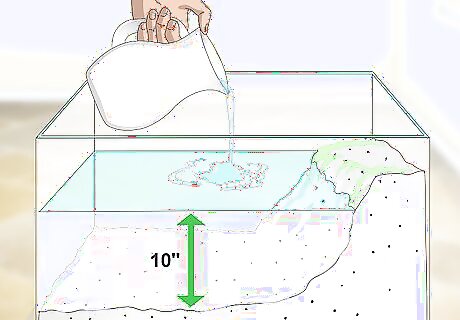
Add enough water. Aquatic newts will spend most of their time in the water. Placing enough water in the tank helps ensure they stay healthy. The water should be at least 10 inches (35 cm) deep. The newt should be able to move around while completely submerged under the water. You should only use dechlorinated water. Chlorinated water or water with other chemicals can harm or kill your newt. To dechlorinate your water, use special reptile dechlorinating tablets which you can purchase online or at pet stores. You can also use spring water. You can buy spring water at any grocery store or supermarket. Never use water directly from the tap. The chemicals in it will kill your newt. If you're going to use water from the tap, you must let the water sit out in an open container for at least 48 hours or longer so that the chemicals can evaporate out of the tap water before adding it to your newt's tank.
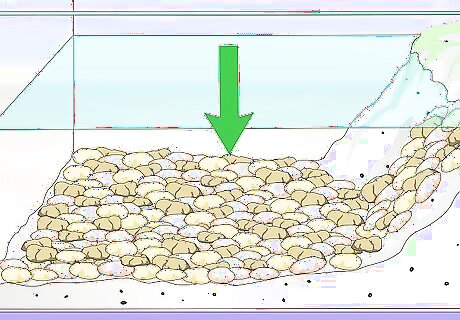
Line the tank with gravel. Washed aquarium gravel should be placed along the bottom of the tank. Place a layer of gravel that is two inches (5 cm) thick. You can gradually stack the gravel so it slopes out of the water to give your newt a place to get out of the water. Consider using large, smooth, round stones for gravel. Your newt won't be able to eat it and it won't be so sharp that it'll cut your newt's feet. Small aquarium gravel can be too small for a newt. Choose gravel or stones that are larger than your newt's feet.
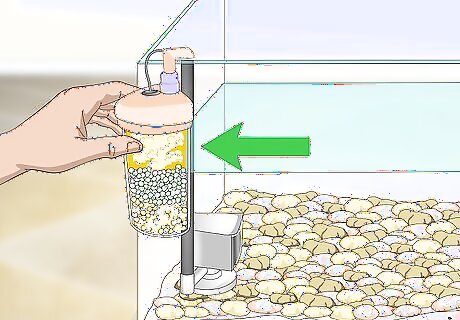
Use a filter. The water inside your newt's tank will get dirty, so you need to use a filter. The filter will depend on how much water is in the tank. Try to get the smallest filter you can to limit the strength of the flow. Smaller filters will need to be changed more often.
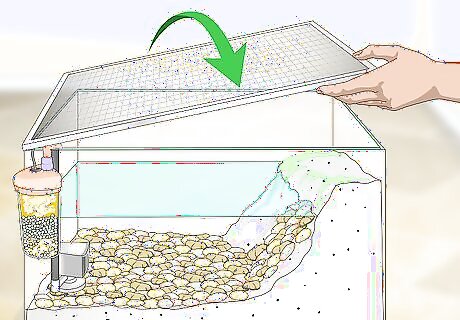
Cover the tank with the appropriate lid. You will need a lid for your aquarium. Newts are escape artists and will crawl out of any crack they can find. Use a screen lid to make sure there is enough ventilation for your newt. Make sure the mesh of the screen lid is small enough that your newt can't slide through.
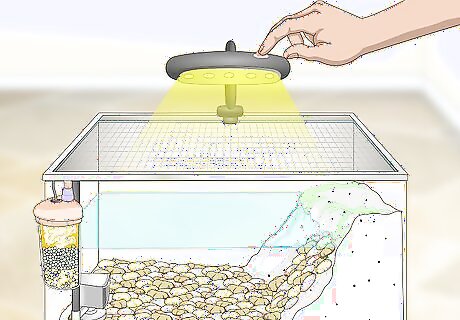
Provide a UVB light source. Newts need full spectrum lighting with UVB rays. It should be turned on for 10 to 12 hours each day. You can place it on a timer so your newt always gets the proper amount of light.
Caring For Your Newt
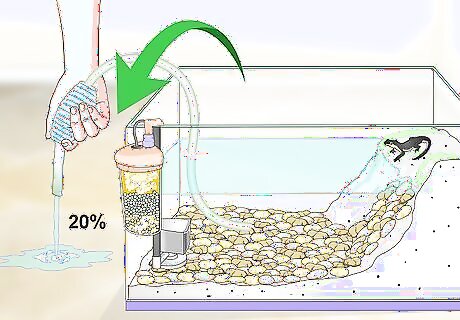
Change part of the water in the aquarium each week. Even if you have a filter, you need to switch out some of the water. Each week, change 20% of the water in the tank. Siphon the water from the bottom of the tank to help remove debris. Replace the same amount of water that you took out with dechlorinated water. If you don't have a filter, you need to switch the water every day or two.
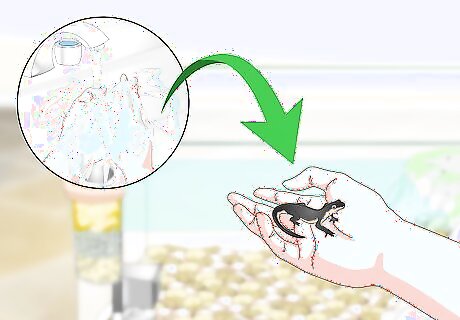
Handle your newt properly. Newts are not pets that you take out and hold, but you may find that you need to hold it for some reason. If you use your hands, make sure to wash them well with soap first and rinse them extremely well, making sure all soap is off your hands. Wash your hands immediately with soap and warm water after handling your newt. Never eat food from your hands or touch your face after handling any newt without washing your hands. Never grab a newt by the tail. Lift it underneath its belly with a cupped hand instead. It's not a good idea to handle your newt while standing, unless your hands are over its tank. Sometimes newts will jump or wiggle unexpectedly and a fall to the ground can be disastrous.
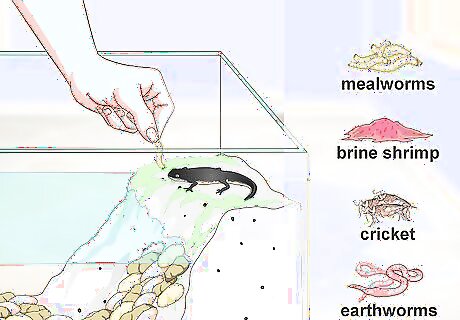
Feed your newt the proper food. Newts can be fed live or frozen foods. They don't need to be fed every day, but can be fed every other day. You can feed your aquatic newt the following foods: Frozen or fresh brine shrimp. Worms, like earthworms, white worms, black worms, bloodworms, phoenix worms, mealworms, leaf worms, red wigglers, or nightcrawlers. Daphnias, flightless fruit flies, and crickets. If you are feeding your newt live insects, you can keep them in a container. Worms generally come in containers with dirt that they can live in for around seven to ten days. For other insects, you can keep them in a jar with small holes punched in the lid for ventilation.
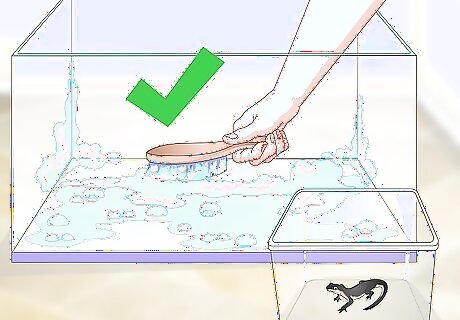
Clean the tank regularly. A clean tank helps your newt stay healthy and live longer. You should do a full tank cleaning every one to two weeks. Place your newt in a container filled with dechlorinated water while you clean the tank. Scrub with water, or if something is really dirty, soap and water. Make sure to rinse the soap away completely before placing your newt back inside. Take out everything in the cage, including the gravel and all decorations. Clean the walls of the tank and all the decorations. Place new or clean gravel into the tank, and then refill with clean water and replace everything you've taken out.



















Comments
0 comment